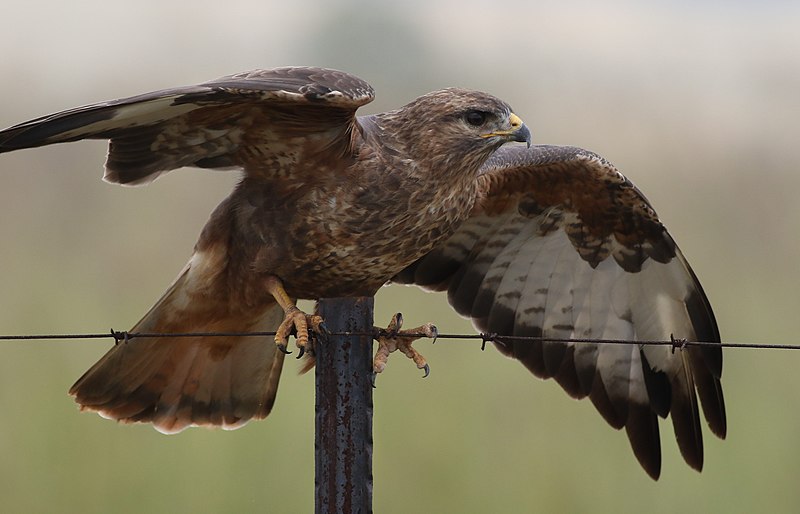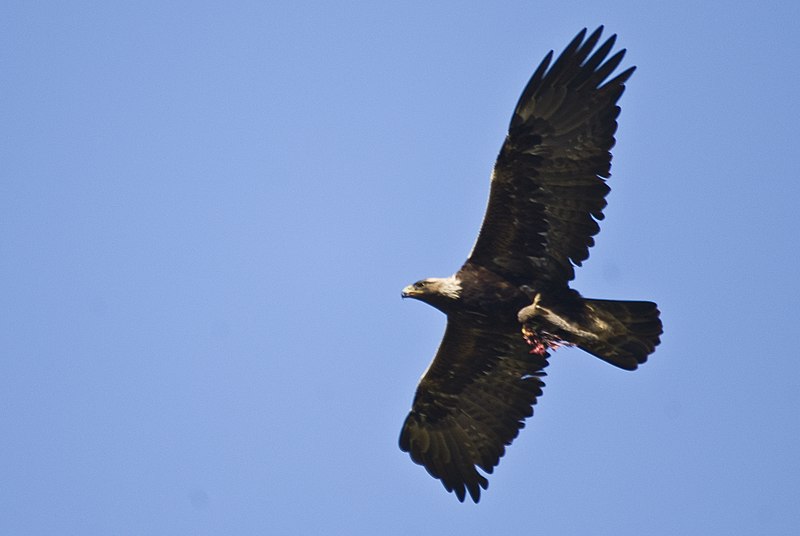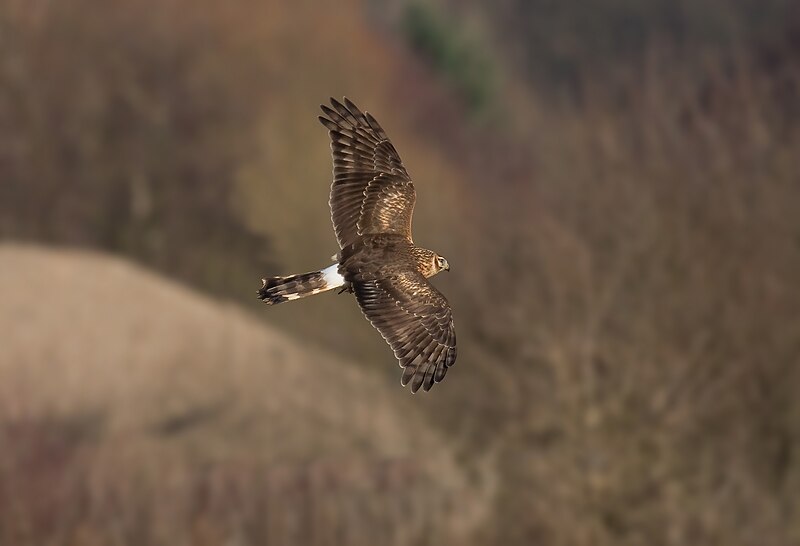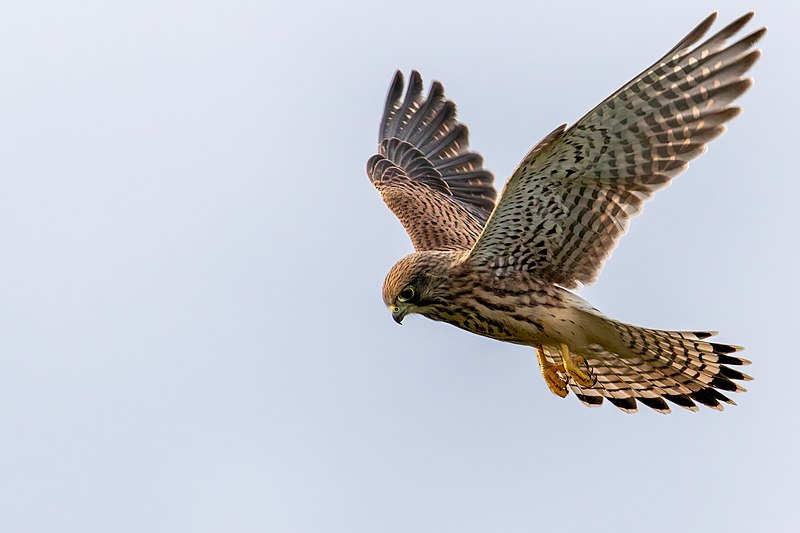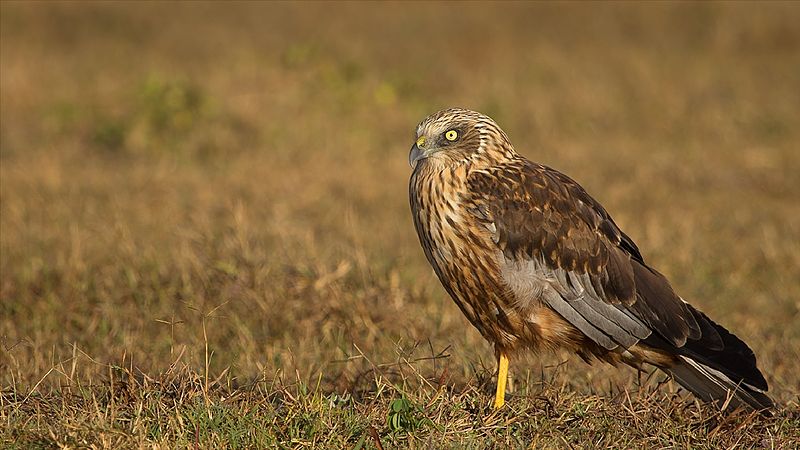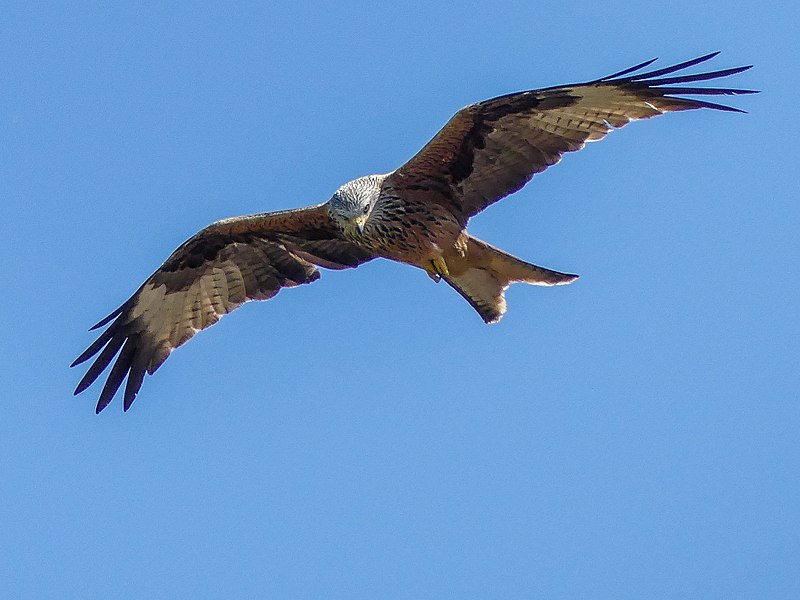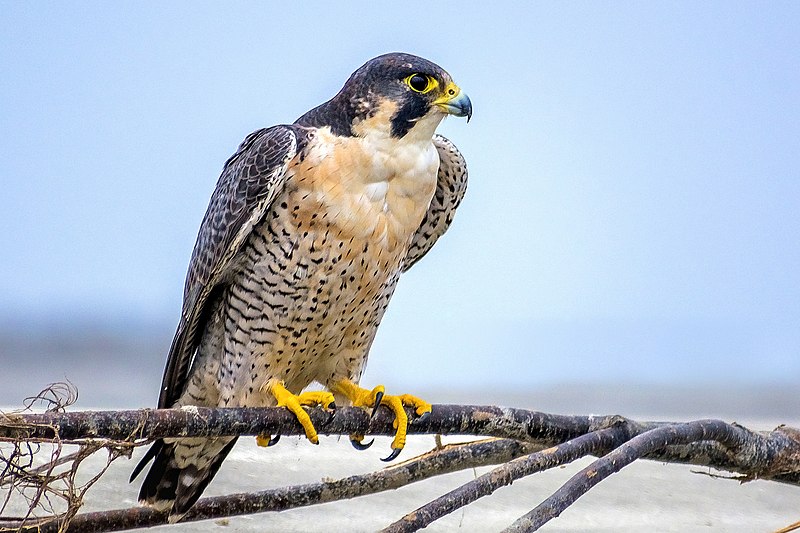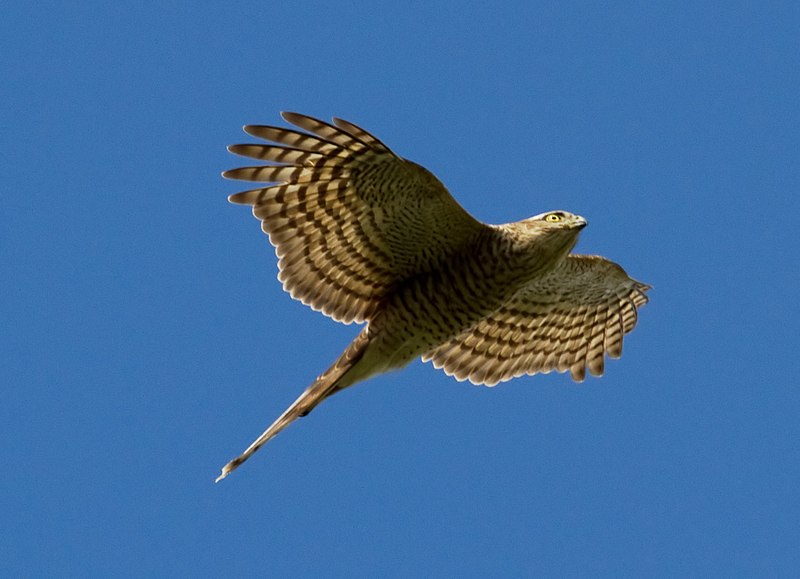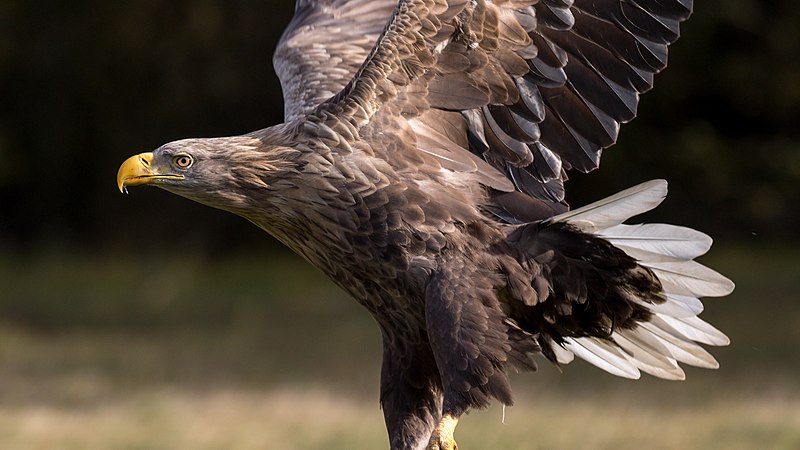There are many species of birds of prey that may be found in Ireland, ranging from the magnificent golden eagle to the nimble kestrel.
These birds are an essential component of the ecosystem that exists in Ireland, and they play an essential part in preserving the natural harmony that exists there.
In the following paragraphs, we are going to have a look at some of the raptors that are found in Ireland that are the most frequent. We shall get knowledge concerning their physical characteristics, as well as their habitat and diet.
In addition to this, we will get knowledge regarding the dangers that these birds face and the measures that being done for their preservation.
Things you'll find in this article
11 Birds Of Prey In Ireland

1. Barn Owl
Barn owls swooping about softly at night may be both awe-inspiring and frightful. Legend has it that the banshee’s wail was influenced by the barn owl’s scream.
These nighttime birds can see in the dark and move almost silently, which helps them sneak up on their prey of shrews, mice, rats, and frogs. They rarely go out throughout the day to hunt.
Due to the removal of elder trees and the demolition of suitable ruins and farm buildings and sheds, the Barn Owl population in Ireland has decreased. The Barn Owl faces the same threats as the other raptor species.
The southern and central regions of Ireland are currently home to Barn Owls. Ireland’s Barn Owl Project helps injured and displaced owls of all species.
2. Buzzards
Since the use of strychnine to control rodents was outlawed in the 1990s, the population of buzzards in Ireland has been steadily increasing. The result was secondary poisoning among the avian population.
But this isn’t the first time the species has faced adversity. It was originally thought that the Buzzard was common in Ireland, but by the end of the 19th century, the species had been wiped off entirely due to hunting.
These birds began nesting again in several counties in Northern Ireland (Antrim and Down) in the 1960s, and since then, the species’ range has expanded farther south.
Buzzards come in many different hues. There are browns that are quite light and browns that are very dark. The plumage is typically barred, and this can be seen both above and below the wings. Buzzards typically make a “kee ahh” sound when they call.
3. Golden Eagle
Ireland is home to some very spectacular birds of prey, including the majestic golden eagle. Most individuals, when asked to name a bird of prey, would undoubtedly mention the majestic and evasive golden eagle.
But they haven’t always been held in such high esteem. As a result of widespread persecution in the nineteenth and twentieth centuries, they vanished from England and Wales altogether.
Donegal has seen the return of these stunning birds in recent years. However, they have also been seen in other mountainous regions of the island.
The golden eagle, Ireland’s second-largest bird of prey, gets its name from the distinctive contrast between its dark brown body and its bright yellow head. Large white spots on the wings are characteristic of young birds but typically fade with age.
4. Hen Harrier
This bird is known to actively seek a wide variety of larger birds, such as grouse and crows. However, it is also known to eat mammals, such as rabbits, young foxes, and carrion. It also eats a variety of smaller birds, such as grouse and crows.
You will have to travel to the uplands and bogs of Ireland in order to witness these birds in their natural habitats. Female hen harriers are larger than males and have dark rings on their tails in addition to a brown and white pattern on their rumps. You will find that their face is remarkably similar to that of an owl.
Finding the male with the distinguishing features is not difficult at all. Their undersides are a pale color with blue-grey flashes, and the tips of their wings are black.
5. Kestrel
The kestrel, a type of falcon, is another of Ireland’s best birds of prey. The kestrel is a common sight anywhere in Ireland. Even before you see them, you’ll be able to identify them by the rapid succession of short, sharp notes they play.
The back and inner, upper wings of both male and female kestrels are brown, while the outer, upper wings are darker. The top tail of males is blue-grey, while the upper tail of females is brown and marked with bands. Males and females both have brown streaks on their heads.
The kestrel is frequently confused with the Sparrowhawk, however the latter can be identified by its smaller wings.
6. Marsh Harrier
Catching a sight of this raptor requires careful planning and precise timing. The marsh harrier lives up to its name by frequenting densely vegetated Irish marshes from March through September, where it preys on a variety of bird and animal species.
You’ll need to train your ears and eyes to listen carefully in order to locate these creatures, as they rarely make a sound.
The marsh harrier and the hen harrier are quite similar in size and behavior. It’s easy to spot an adult male by his grey head and russet brown body, however most of them appear grey when their wings are spread. Adult females are primarily dark brown in color, with some beige spots on the neck and head.
7. Merlin
The Merlin falcon is the smallest in Europe and native to Ireland. It shares the little size of the common blackbird. These tiny birds of prey are fearless, fast hunters. Merlins ambush their prey, scare them into the air, and then pursue them.
Merlins have similar plumage to Peregrine Falcons, but unlike Peregrines, Merlins do not have mustaches.
The upper parts of a male Peregrine Falcon are gray, while the under parts are white and a bright yellowish orange. The male story concludes with a single dark band, while the female has several. The tips of the broad wings taper.
Irish merlins spend the summers on highland bogs and the winters in more sheltered areas. Having this species breed in Ireland is a rarity.
8. Red Kites
The red kite is another of Ireland’s birds of prey. The broad wings and forked tail of these graceful birds are telltale signs of their species. The bodies of both male and female red kites are a rusty brown with darker streaks, while their heads are a drab grey. When in flight, the orange tips of their tails can be seen flashing.
Ireland’s red kite population is progressively increasing, especially in the cities of Dublin, Down, and Wicklow. They have a scavenging diet rather than a hunting one. Because of this, you can frequently spot them among dead animals that have been hit by a car. However, they also occasionally eat rodents, small mammals, and even rabbits.
Their distinctive ‘peee-ooow’ sound is a harsh mewing chirp that sets red kites apart.
9. Peregrine Falcon
The peregrine falcons can stoop, fold their wings in, and dive at speeds of up to 320 kilometers per hour (199 miles per hour) to attack their prey. birds such as pigeons, collared doves, ducks, and seagulls are killed by the collision. Rather than diving for fish, these birds go to the air.
Females typically weigh more and have a larger frame. Both sexes have identical feathering. Blue-gray on top, white with dark bars below best describes a peregrine falcon. White patterns on the throat and mustache on a black hooded head. The beak, feet, and eye rims are all yellow.
You can see these birds all around Ireland, especially near the seaside. The nests of peregrine falcons can be found in cliffs or quarries.
10. Sparrowhawks
The tiny size of a sparrowhawk (about 30 cm or 12 inches) is a telltale sign of its species. While in flight, you can make out the long tail and rounded wings characteristic of hawks.
Both sexes have barring on their undersides, with males sporting a rusty chestnut pattern and females a more neutral gray. Males have blue-grey heads, while females are typically browner. They have yellowish-orange eyes.
These raptors can be spotted all over Ireland, however they prefer to set up nests in wooded regions. It’s likely that you can spot them in a wide variety of environments, from forests and farms to cities and backyards. On rare occasions, they will attempt to catch the small garden birds that frequent bird feeders.
11. White Tail Eagle
The white-tailed eagle, sometimes known as the sea eagle, is a magnificent bird. The enormous wing span of up to 2.4 m (ca. 7.8 feet) provides a glimpse of the sheer size of these predators.
White-tailed eagles were for a long time exterminated in Ireland. Successful reintroductions began in Scotland in the 1970s, when Norwegian chicks were used for the first time.
The reintroduction of White-tailed Eagles to Killarney National Park in 2007 proved fruitful, and the subsequent reintroductions took place in 2020–2022. Individual birds, like most recently reintroduced species, are tagged on the wing and tracked through satellite.
These birds have a white tail, as their name suggests, a brown body, and a lighter brown head with a yellow bill. They live close to the water and feed on carrion, fish, birds, and small mammals; their territory size can reach up to 70 square kilometers (27 square miles).
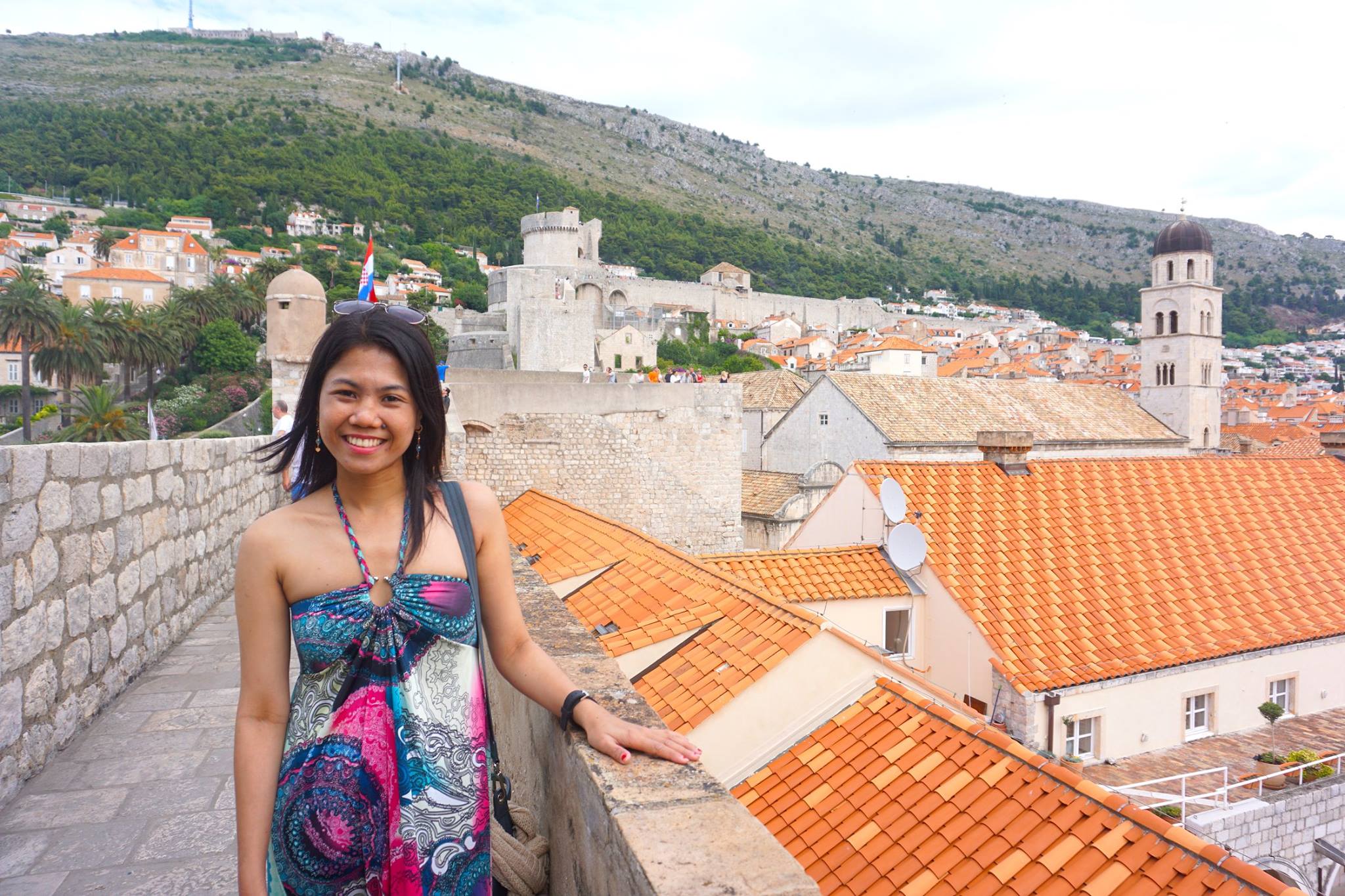
Hi, I’m Christine – a full-time traveler and career woman. Although I’m from the Philippines, my location independent career took me to over 60 countries for the past 12 years. I also lived in 4 continents – from the Caribbean, South East Asia, Africa and now in Europe. But despite living in several countries, my love for Ireland remains the same. A country that had been a part of my life since I was 14 because of my love for Irish music and bands. Ireland Travel Guides was born because of this passion and hopefully, in some little ways, this website will be able to help you on your next trip to Ireland.

